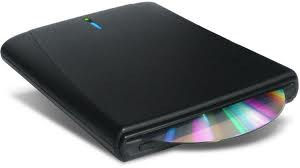Backup. Oh yeah?
- Daniel Zahavi-Asa
- Jun 1, 2015
- 6 min read

“There are two type of computer users. Those who backup and those who will.”
Imagine that you have all your most sacred data: video, pictures, email, documents, and business on your computer. Now imagine that you think you have nothing to worry about because you think you have everything backed up. Finally, imagine what would happen if suddenly and without warning, there was a power surge so powerful that it literally burned every part of your computer. Every part. RAM, motherboard, DVD player, case and hard drives. Hard drives? That’s right. The backup that you thought you had on that second hard drive you added to your computer last year is burned to a crisp. The entire computer smells like a fire raged through it. Everything gone. Now go and try to get all that data back.
That’s what happened to one of my current clients BEFORE he became my client and BEFORE he backed up. He lives in an area where there are power surges, spikes and blackouts all the time. His computer had no surge protection and no UPS. In the middle of the day, there was a power outage and then a tremendous power surge when the power went back on. The next thing I know, my phone is ringing and it’s him on the other end desperately explaining (i.e. crying) to me how his computer won’t go back on and that it smells very smoky. I told him to unplug the computer from the wall and wait until I get there.
And when I did get there, his entire office smelled like burnt. This first thing I did was to open the computer case. I saw nothing unusual but the smell became even more intense. He has (had!) two hard drives in the computer. The second one was used as a backup to the first (not a real good idea as it turns out). I decided to take out each hard drive and test them separately. Neither would turn on, boot or otherwise show any signs of techno life. Uh oh. This was bad. Really bad. All my clients’ data was on each of these two drives. Now what?

Another one of my clients thought she had most of her documents backed up, but it turns out she neglected to back up her most vital ones.
So there she is, working away on her computer, when, at the most inopportune moment, her screen froze and she heard a grinding noise coming from inside the computer. It was not the fan noise she was used to. It turned out to be a hard drive noise. The kind of hard drive noise you never want to hear, but when you do hear, you know it’s really bad. The kind where you know you’ve just lost all your data.
After accessing the situation and conferring with me, she ended up sending her hard drive to a company that retrieves lost data. $700 later she had her data back.
These are but a few of the many stories from my clients and their adventures of losing data because of the lack of backup. What data can you afford to lose? What about the cost and time of installing a new hard drive? Installing and configuring the computer? How much down time is it worth? How much backup do you need? What type of backup is best? And, hey!? Where do I start?
Backup and its many forms
The following is a list of possible hardware backup solutions for use on your PC or LAN.
Disk-on-key/Flash drive

A disk-on-key is one of those little drives that fits into a USB port and into your pocket easily. They come in many sizes from 256MB to 16GB and more, so you can put lots and lots of files of all kinds onto it. There are a couple of down sides to using a disk-on-key. First, you can lose the little sucker in a flash (pun intended). Attach it to your keychain or put it on a strap to wear around your neck. Second, you must take care when you remove the drive from your computer as they can easily and fry. Always remember to manually eject the drive BEFORE you actually pull it out of the USB port in the computer.
External Hard drive

External hard drives are cheap and loaded with space. The average price of an external drive is between $50 and $150 depending on the size of the drive. Now it’s just an issue of deciding what brand and size drive to buy. A 500GB Western Digital external drive will do the trick for most people. Just remember to treat them gently. Don’t drop or bump them around too much as they have a tendency to crash when mistreated. If you buy the smaller 2.5 inch version, the best thing is to get a case for it. Case Logic sells a very nice case for around $10.
DVD burner

This is probably the worse option around today. The actually media is wonky and unreliable. Depending on the manufacturer of the DVD disc and the maker of the DVD player/recorder, you can burn through many disks just to make one copy. In addition, the DVD is more susceptible to heat and scratches. They also warp and crack easily. Make this your last option.
NAS network attached storage

I love this option. It’s a bit more complex than other solutions, but it can also be a fun project and learning experience.
Basically, a NAS is a computer attached to a network that provides a file-server for that network. Once a NAS is installed, it does not necessarily need a keyboard or display, as it can be configure via a browser and controlled over the network.
For my NAS setups, I use old hardware including hard drives, RAM, cases and motherboards. This is a perfect solution for what to do with your old computers.
For a complete explanation of how to setup and configure a NAS, go to http://www.freenas.org/.
The Cloud

In recent years you have probably heard or seen commercials for backing up your data “in the cloud” or online. The concept is very simple. After downloading installing a small and simple application, you select the files you wish to backup and click the ‘backup now’ button. It may take a while the first time you initiate the backup. Do not despair. Future backups will be incremental and therefore faster.
Backing up to the internet is especially good for documents. These are usually the smallest files on your computer, so they’ll get backed up quickly. What about music, videos and the like? Not so much. These files are much heavier and will take half past forever to upload. And just think that if it takes that long to upload, it’ll take just a long to get them back. For these types of files you’re better off using one of the previously discussed methods.
So, where do you find “in the cloud” storage? Well, there are many places. Here are just a few and the links to them:
Dropbox. Dropbox is probably the most well known of all the cloud backup/sync applications. It allows only one folder for syncing, so you have to put all your files to be synced there, and it only gives you 2.5GB of storage. It allows you to share links to your data. Get Dropbox here.
Copy. Similar to Dropbox but starts you out with more (lots more!) storage. Get Copy here.
There are, of course, many other examples of online “cloud” storage, but these should get you started. In addition, each of these solutions also has a tablet app which provides you with even more ways to access your data. There is even a way to access, share, copy and move files among your multiple online storage; Otixio is one example.
So there you have it; some the many possibilities of data backup. The only thing left to do is to find and install a good (and easily understood) backup application. You will find literally hundreds of backup programs on the internet. Some are free. Some are for pay. Some come with your hard drive purchase.
For help with a backup solution or any other computer/network related issue you have, please call Daniel at 053.726.5175. We’re here to help you make the right choice.
































Comments